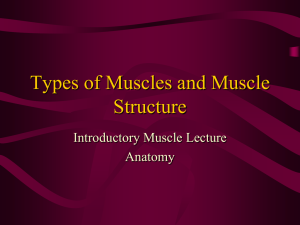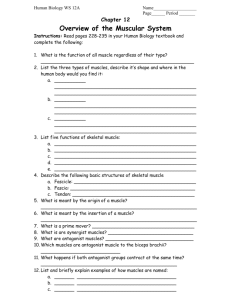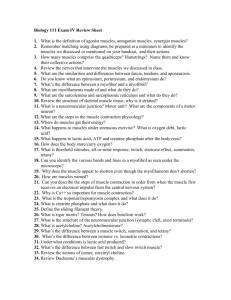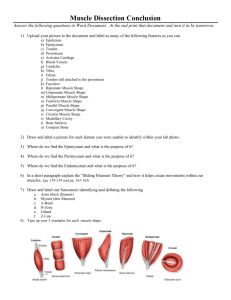Musc
advertisement
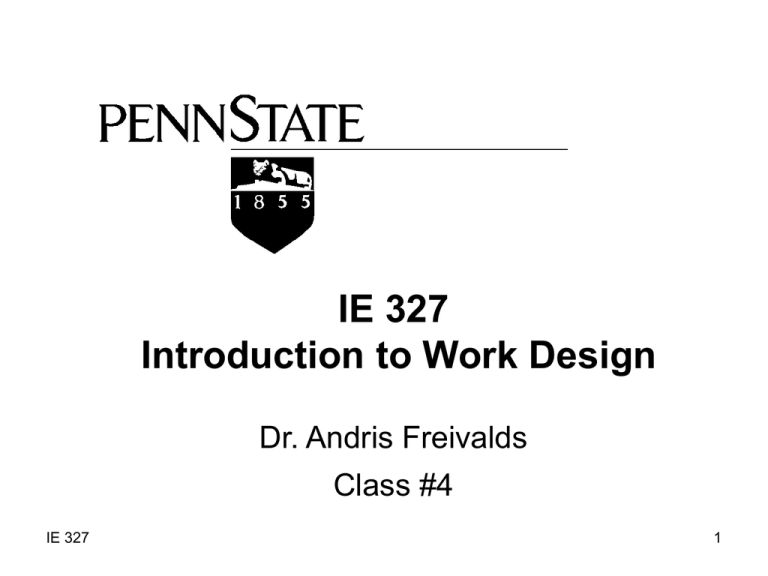
IE 327 Introduction to Work Design Dr. Andris Freivalds Class #4 IE 327 1 IE 327 2 IE 327 3 IE 327 4 IE 327 5 IE 327 6 Ch. 4 – MUSCULOSKELETAL SYSTEM (and Work Design) IE 327 7 MUSCLE STRUCTURE • • • • • Muscle and tendon Bundle of fibers Blood vessels Muscle fiber Myofibril – Thick filament = myosin – Thin filament = actin • Sliding filament theory IE 327 8 FORCE-LENGTH RELATIONSHIP (Max strength at midrange) IE 327 9 Achieve max muscle strength at midrange of motion • • • • Where is midrange? Relaxed posture No muscle force Weightless astronaut in space • Avoid extremes!! IE 327 10 FORCE-VELOCITY RELATIONSHIP • Max muscle force with slow motion • Use momentum to assist work • Minimize fighting gravity IE 327 11 OPTIMIZE HUMAN STRENGTH • Use optimum postures • Use large muscles for power • Avoid using back • Design tasks so that most can do! IE 327 12 MUSCLE ENDURANCE • Static hold • Occlusion of blood flow • Rapid fatigue • Stay < 15% max • Short, frequent work-rest cycles • Dynamic work IE 327 13 MOTOR UNIT RECRUITMENT • Use small muscles for precision • Use large muscles for power • Power vs. pinch grip!! IE 327 14 CONTROL OF MOVEMENTS #1 • • • • Pivot on elbow Curved motions Use both hands Begin and end motion simultaneously • Move simultaneously to and from body • Use natural rhythms – Whole body = 17/min – Whole arm = 35/min – Forearm = 60/min IE 327 15 CONTROL OF MOVEMENTS #2 • Use lowest classification of movement • Decrease difficulty of task – ↓ distance – ↑ target width IE 327 16 MINIMIZE EYE MOTION (Within normal line of sight) IE 327 17 KEY POINTS: • Design work according to human capabilities and limitations • For manipulative tasks: – Dynamic motion rather than static holds – Strength requirements < 15% max – Avoid extreme ranges of motion – Small muscles for speed and precision – Large muscles for strength IE 327 18



